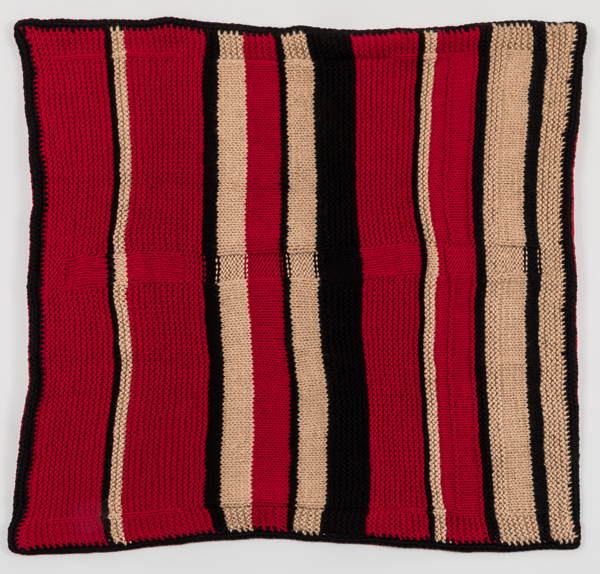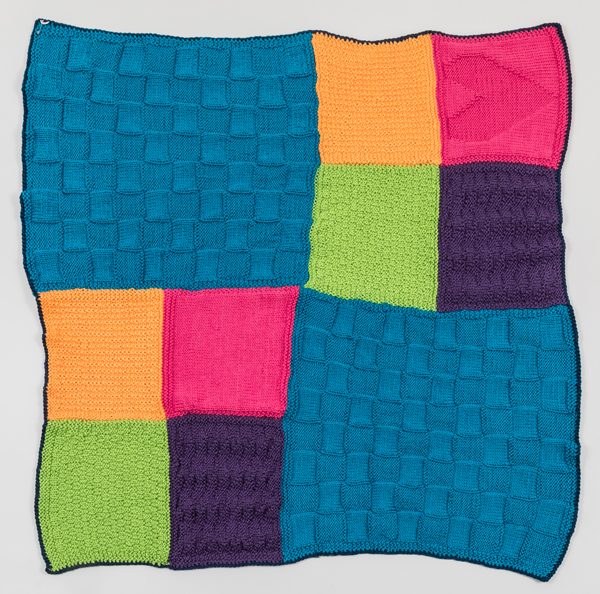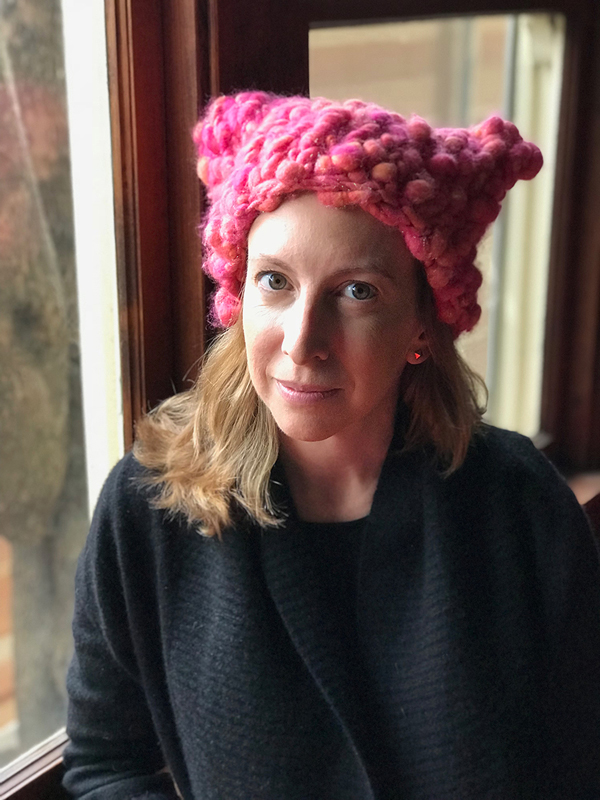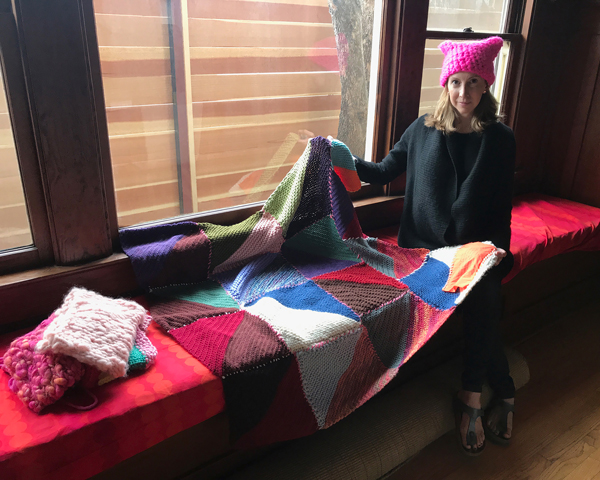Ushering in the new era of Trump, a sea of pink at the 2017 Women’s March became the first undeniable sign of mass resistance. A resounding response to “grab ’em by the pussy” and other far-flung insults that characterized the presidential election. For a while, the handmade, cat-eared hats were everywhere. One might even a draw a correlation between the Women’s March and its inclusion of Pussy Hats to the strength-in-numbers power of the #MeToo movement.

Knitting Welcome Blankets, June 2017, Roshida Abira Ali
Jayna Zweiman is the co-creator of Pussy Hat. She has since launched another project, “Welcome Blanket,” to honor refugee immigrants. As we talked about both projects this summer, there was a backlash to the administration’s “zero tolerance” policy of separating asylum-seeking families and the Supreme Court’s upholding of the travel ban. Like an oracle, Zweiman seems able to predict each new wave of progressive consciousness.
Zweiman is an architect. Fascinated by the idea of turning a line into sculptural form, she learned how to knit while on an architecture fellowship. Later, that would factor into Pussy Hat, which was conceived and mobilized in a knitting circle. She describes each hat as “like a brick” in the massive community infrastructure she helped build to launch a million hats on the National Mall. With Welcome Blanket she applies the concept of a “line of yarn” to the 2000-mile proposed border wall between Mexico and the United States, re-contextualizing it as a line of inclusion. A very real 2000 miles of yarn (or other sewing/crafting material) is used to make blankets for incoming immigrants.
People from across the country are making knit, crocheted and quilted blankets in response to calls for submission posted on social media, the internet and craft stores. The blankets mostly, but not exclusively, come from women. With each, an accompanying note communicates a message to its receiver. The notes tell personal stories of relatives who fled wars, persecution, famine, or endured slavery or forced migration.

Knitting Welcome Blankets, June 2017, Roshida Abira Ali
Thousands of blankets were collected last year by the Smart Museum of Art at the University of Chicago, then displayed together as an exhibition. Volunteers logged everything into a database to track the donations’ eventual delivery to refugee resettlement organizations, which will then distribute them. This summer, blankets were featured in a show at the Museum of Design Atlanta, and at a fundraising event in Los Angeles for Miry’s List, a local nonprofit that assists refugees from places like Syria, Iraq and Afghanistan.
Welcome Blanket’s implementation, from its grass-roots solicitation of maker-donors to its collection- and distribution-networks, and even notes from one stranger to another, follows the model devised for Pussy Hat. This template for a large-scale, crowd-sourced approach draws from Zweiman’s own experiences. As a political activist in the late ’90s, Zweiman helped plan Bill Clinton’s second inauguration, which informed her calculation about the impact of a large crowd on the National Mall. Another experience she drew on was her recent recovery from a debilitating injury. When she learned of the Women’s March, she wasn’t well enough to travel. She decided to do so by proxy, through those who could wear hats that she and others made.

Jayna Zweiman with pink hat, photo by Anne Martens
Can the hats and blankets be viewed as legitimate pieces of art? Many of the blankets are superbly crafted. Some are brilliant in concept, like a knit black-and-white one with an image of a QR code that reads “This land is made for you and me.” Individually, most blankets don’t really register as art but simply as handcrafted textiles. Yet, like the panels of the AIDS Quilt (first displayed in its entirety on the National Mall in 1987) they resonate en masse. As holistic projects, Pussy Hat and Welcome Blanket can be viewed as conceptual, performance and/or installation art. One influence on Pussy Hat was Christo and Jeanne-Claude’s The Gates (2005). Its swaths of a single-hued fabric sparked the idea for the sea of pink. Another was the AIDS Quilt, which is generally considered to be folk art. Now embraced by the contemporary art world, craft has shed its pejorative association as “women’s work” and even embraces that as a form of empowerment. “Craftivism” is a further extension of such power.
Art, of course, has historically always been a tool for political activism. Pussy Hats and Welcome Blankets are now collected and exhibited by museums. Significantly, as projects they extend the concept of what art is, and who the artist is. Are the many enlisted makers artists? The implication of extending art’s scope is itself a form of Zweiman’s particular brand of activism for its invitation to any and all who wish to participate.


